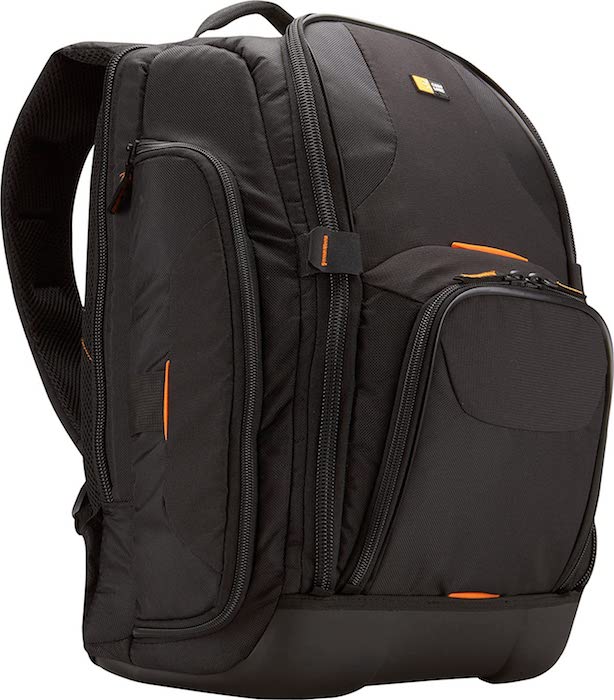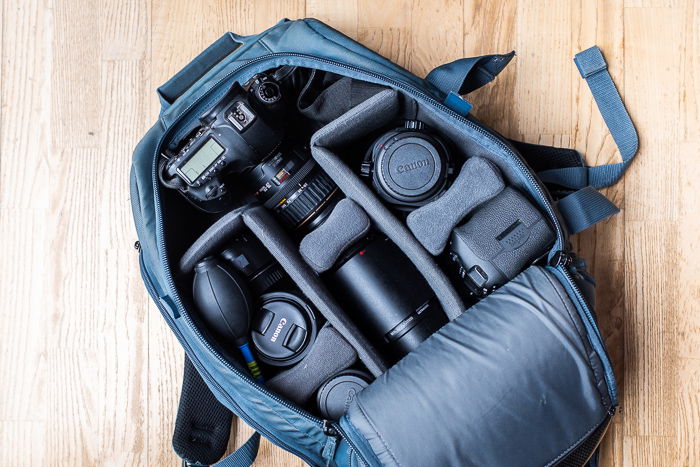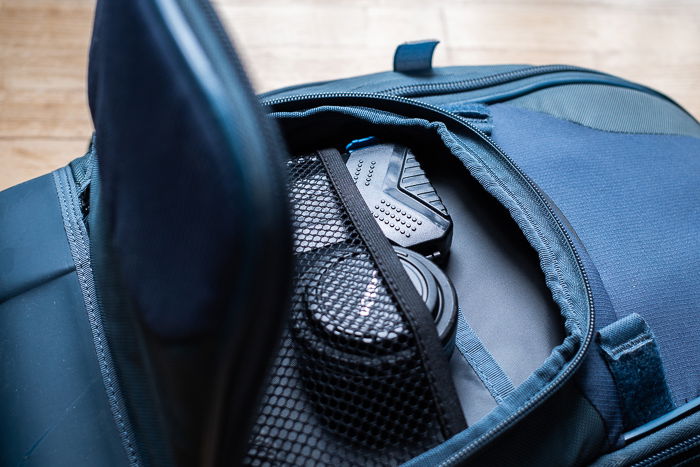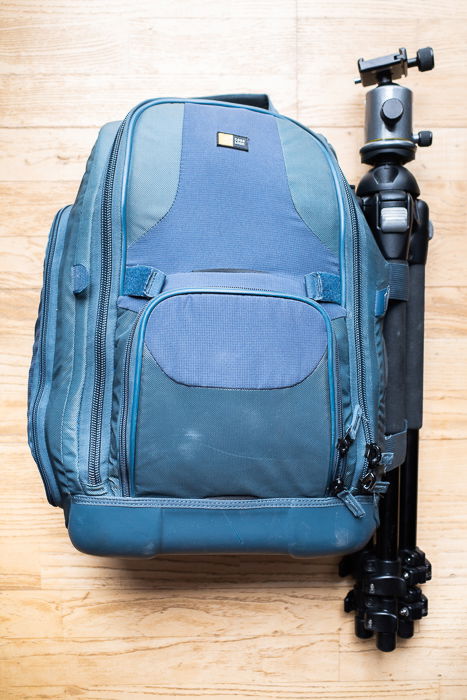Buying a camera backpack that best fits your needs is crucial. The problem is that there are so many features to consider, so comparing and ranking them is hard. But don’t worry. We’ve done all the legwork with the SLRC 206. Read on for everything you need to know. And find out if it’s the one for you!
Overview of Case Logic SLRC 206
This is a medium-sized backpack that can fit a decent DSLR kit, a tripod, and a 15.6″ laptop. It has a main compartment volume of about 13 litres. You can flexibly reconfigure it to fit you and your gear’s needs. The exterior is built of nylon with foam on the inside. It withstands nature well, and all compartments are easy to access. It’s quite sturdy, but there are some weak points. I’ve been using this as my medium-sized camera bag for two years. This is what I use for longer trips, hiking, events, and other outdoor shoots. I have a large bag that holds my entire equipment, and a small bag to carry a DSLR and two lenses. Please note that the blue version I have is not available anymore, only the black-orange version.
Who Is the Case Logic SLRC 206 Backpack For?
This bag was designed with the enthusiastic amateur and occasional professional in mind, who needs instant access to much of their gear. The price indicates that it’s around the upper-midrange of the market. It’s great for travel and landscape photography. It can hold just the right amount of gear necessary for these. I usually carry two DSLRs, 4-5 lenses, a laptop, a tripod, and accessories in it.
Key Features
Compartments and Interior
The SLRC 206 backpack has four compartments. These are divided into several smaller sections. The main compartment is where you can store your camera gear. It has memory foam on the inside, and movable solid foam walls that separate the different accessory bays. There are two smaller and two larger walls. They are locked in place with velcro, and easy to move around, but don’t loosen on their own. In the middle, there is a larger bay where the main zoom lens attached to the camera can go. This is accessible from the top, with the bag half-opened. There are two velcro locks to stop the zips where the additional compartments start, so you can securely remove and put back your main camera. Originally, there was a narrow cover spanning the width of the bag there, with a hammock attached to it. I removed it because most of the lenses that I carry attached to the main camera are too large to fit through it comfortably. Its size is more suited for crop sensor kit lenses. On the flip-up outer side, there are two pockets for storing hard drives, memory cards, batteries, all you can imagine. The laptop compartment is located on the back of the bag. It’s large, and the zips go all the way down, so it can be flipped open entirely. It’s also covered in foam. It fits 15.6″ laptops comfortably. My 14″ laptop, its charger, and some magazines or a book also fit well. I have one issue with this section: the handle is behind it. This means that you can’t open it while holding the bag on the handle. It’s a slightly annoying thing, but probably the only one I can explicitly complain about.
On the front of the backpack, there is a smaller compartment for accessories, quickly needed things, maybe a compact camera. I use it to store my non-photo-related stuff, or (as shown below) to store anything that didn’t fit in the main section.
On the side, there is another small pocket, which is long and narrow. You can use it to store a bottle or additional small items. The tripod on the other side is held by two straps, which hold it firmly. You can lock two legs and the center column (as below), but the straps and velcro are long and strong enough to hold the tripod even if they’re just around it.
Exterior and Durability
The exterior is made of reinforced nylon. In most places, it’s strong and thick, but not everywhere. The top section of the bag between the laptop and the main compartments is the most obvious weak point. Although you’re unlikely to drop the bag on that section, I’ve read reviews where that part wasn’t strong enough. The outer cover of the two smaller pockets is also not particularly strong. Otherwise, this bag is pretty sturdy. The contacts are firmly made; nothing has come loose yet. The zips run smoothly and securely, and they’re quite oversized. The bag is also weather-sealed, you don’t need an extra cover on top of it to protect from rain, based on personal experience. The outer pockets are, again, slightly weaker from this standpoint, but I only had one occasion when their insides became noticeably humid. On the bottom lies the reason I like this bag so much. It’s a strong, rubberised plastic cover spanning the entire bottom. This protects it from drops and water, and enables me to put it down vertically anywhere. The back of this backpack is comfortable, padded where it needs to be.
Alternatives
There are several similar backpacks at similar prices, let me link a few of them. The Lowepro 300AW Classic is really a classic when it comes to medium-sized camera backpacks. It’s an excellent option, but it lacks the reinforced bottom and doesn’t hold a laptop. This Manfrotto camera and laptop backpack is designed to be a versatile bag. It can store camera gear in its full volume, or split into two and only store it in the lower section, leaving space for other stuff on the top.
Our Verdict
The Case Logic SLRC 206 camera backpack is a great choice if you’re looking for a bag for your laptop and medium-sized DSLR kit. It’s a well-balanced option with little to worry about, and only minor design issues.








